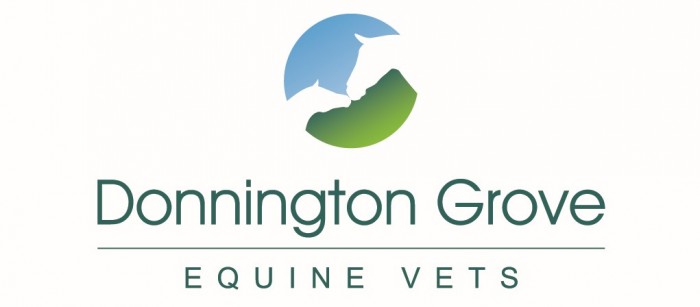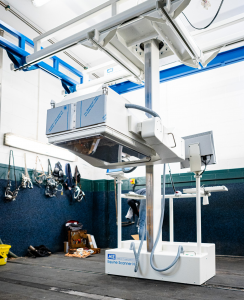Motion-corrected equine scintigraphy for racing and riding horses
19th April 2023

Donnington Grove veterinary group has been using the MiE Equine Scanner H.R. gamma camera for bone scanning
Donnington Grove is a veterinary group in Newbury, Berkshire, with a dedicated equine center. With a long association with Lambourn racing and led by RCVS, European, and American recognised specialists, Donnington Grove has been using a MiE Equine Scanner H.R. gamma camera to image both riding and racing horses for the past three years.
As a senior veterinary nurse, Lisa Spencer works closely with Donnington Grove’s imaging specialists, as well as training new graduate vets who join as interns. Lisa’s typical workload means she performs at least one or two scans on riding and racehorses every day.
Explaining the decision to install the scanner, Lisa said, “We acquired the MiE camera to replace a very old system that originally came from a hospital many years ago and was repurposed for equine scintigraphy. It was very big and cumbersome, and the image quality was not as good as we would ideally like. It had deteriorated over time, and investing in a new, modern system became a necessity.”
Superior image quality with MiE’s motion correction software
MiE have developed the world’s first real-time motion correction software to account for movement when scanning and is able to remove it from captured images. This rigid registration software allows shorter image acquisition times by preventing the need to repeat scans and also improves signal-to-noise ratio to produce sharper contours to significantly improve diagnostic quality.

It is this unique function that allows the equine nurses to capture better images with less effort than Donnington Grove's previous camera. Lisa said, “We capture excellent images using the MiE because of the correction software, much better ones than we did with the old scanner. A lot of the older riding horses tend not to stand so well, so there’s a lot of movement when scanning and the motion correction is a great help.
“We have a couple of imaging specialists at Donnington who look at the images in the evenings and produce the reports. They’re very happy with the quality of images we take for them and the MiE system allows them to see real subtleties that would otherwise take a lot more time and effort to see and diagnose, and it stops me from having to repeat scans.”
“A horse typically requires around fifty images, perhaps more, so imaging horses is a lengthy process, but the MiE’s motion correction software is so good that better quality diagnostic images are achievable without numerous retakes. With our old system, we would have taken many more repeats and still not seen the subtle abnormalities that are sometimes present. This minimizes the sedation time for the horse and the radiation exposure to staff which makes it safer for everyone involved.”
Optimum positioning without patient realignment
The MiE camera is designed to be operated by two users, as opposed to other models that demand up to four. Lisa said, “We have Equine Care Assistants who help hold the horses for bone scanning, MRIs, and radiography. The MiE needs someone to hold the horse and another to operate the camera and computer, which can be done by one person because the MiE has two screens and a remote control to start imaging, but we prefer three if possible. That way, the computer operator can label images and review and edit scans while another person, usually myself, positions the camera for the next acquisition, which speeds up the process.”
Find out more
You can learn more about the MiE equine gamma camera by clicking the button below to speak to a product specialist.